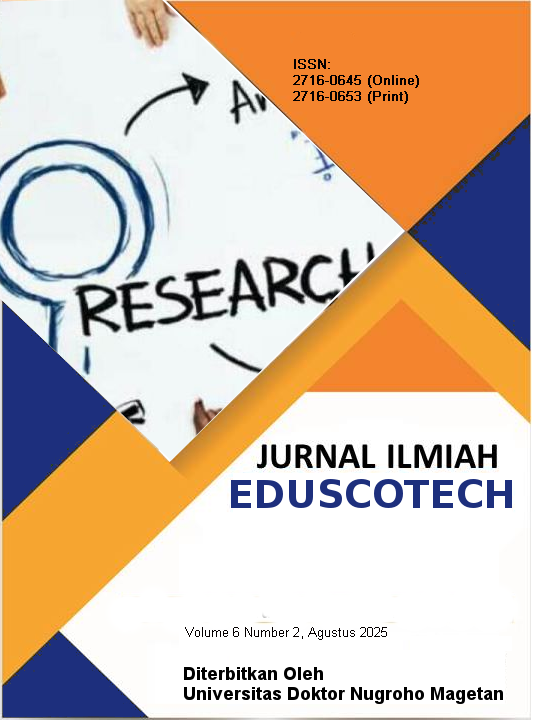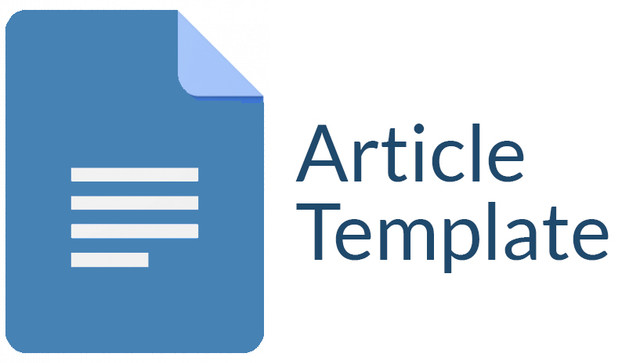KAWA (Kurikulum Anak Wawasan Jawa) untuk PAUD
Keywords:
KAWA, early childhood education, Javanese culture, character educationAbstract
The Javanese Insight Children's Curriculum (KAWA) is an early childhood education innovation that integrates Javanese cultural values in the learning process. This study aims to describe the implementation of KAWA and its influence on early childhood development on motor, social-emotional, language, cognitive, and cultural aspects. The research method uses a qualitative descriptive approach supported by quantitative data. The subjects of the study included 50 PAUD children aged 4–6 years in Yogyakarta, six teachers, and 30 parents. Data was collected through observation, interviews, and questionnaires, then analyzed with the percentage of child developmental achievements. The results of the study showed that the application of KAWA was able to improve children's development holistically: motor (82%), social-emotional (85%), language (78%), cognitive (80%), and culture and character (88%). These findings show that KAWA not only supports academic learning, but also strengthens children's cultural identity and character from an early age. Therefore, KAWA can be used as a curriculum model based on local wisdom that is relevant to be applied in various regions in Indonesia.
Downloads
References
American Academy of Pediatrics. (2021). Physical activity in early childhood. American Academy of Pediatrics.
Badan Pusat Statistik. (2020). Data statistik pendidikan. Jakarta: BPS.
Badan Pusat Statistik. (2022). Statistik sosial dan ekonomi penduduk Jawa. Jakarta: BPS.
Bronfenbrenner, U. (1979). The ecology of human development: Experiments by nature and design. Harvard University Press.
Goleman, D. (2020). Social and emotional learning in childhood education. New York: Basic Books.
Harvard University. (2020). Child development and social-emotional growth. Harvard Child Study Center.
Kementerian Pendidikan dan Kebudayaan Republik Indonesia. (2016). Peraturan Menteri Pendidikan dan Kebudayaan Nomor 22 Tahun 2016 tentang Standar Proses Pendidikan. Jakarta: Kemdikbud.
Kementerian Pendidikan dan Kebudayaan Republik Indonesia. (2021). Pedoman standar PAUD. Jakarta: Kemdikbud.
Montessori, M. (2017). The absorbent mind. New York: Holt.
National Association for the Education of Young Children. (2021). Developmentally appropriate practice in early childhood programs. Washington, DC: NAEYC.
National Reading Panel. (2000). Teaching children to read: An evidence-based assessment of the scientific research literature on reading and its implications for reading instruction. Washington, DC: National Institute of Child Health and Human Development.
National Science Foundation. (2021). Early STEM learning: Evidence and practices. NSF.
Prabowo, A. (2022). Integrasi kurikulum lokal dan nasional. Jurnal Pendidikan Nasional, 14(2), 55–67.
Rahmawati, D. (2021). Pembelajaran kolaboratif dalam pendidikan budaya. Jurnal Pendidikan Karakter, 12(1), 44–59.
Sari, R. (2022). Pelatihan guru dalam mengajarkan budaya lokal. Jurnal Pendidikan dan Pengajaran, 18(3), 77–92.
Setiawan, M. (2021). Sikap orang tua terhadap pendidikan berbasis budaya. Jurnal Pendidikan dan Masyarakat, 11(2), 101–115.
Supriyanto, H. (2021). Pendidikan karakter berbasis budaya lokal. Jurnal Pendidikan dan Kebudayaan, 16(1), 88–97.
Universitas Negeri Yogyakarta. (2022). Studi pendidikan berbasis budaya Jawa. LPPM UNY.
Vygotsky, L. S. (1978). Mind in society: The development of higher psychological processes. Harvard University Press.
World Economic Forum. (2022). The future of jobs report 2022. Geneva: WEF.
Wulandari, N. (2020). Kegiatan berbasis masyarakat dalam pendidikan budaya. Jurnal Pendidikan dan Masyarakat, 10(4), 122–135.
Downloads
Published
Issue
Section
License

This work is licensed under a Creative Commons Attribution-ShareAlike 4.0 International License.
Authors who publish with this journal agree to the following terms:
1. Copyright on any article is retained by the author(s).
2. The author grants the journal, right of first publication with the work simultaneously licensed under a Creative Commons Attribution License that allows others to share the work with an acknowledgment of the work’s authorship and initial publication in this journal.
3. Authors are able to enter into separate, additional contractual arrangements for the non-exclusive distribution of the journal’s published version of the work (e.g., post it to an institutional repository or publish it in a book), with an acknowledgment of its initial publication in this journal.
4. Authors are permitted and encouraged to post their work online (e.g., in institutional repositories or on their website) prior to and during the submission process, as it can lead to productive exchanges, as well as earlier and greater citation of published work.
5. The article and any associated published material is distributed under the Creative Commons Attribution-ShareAlike 4.0 International License









